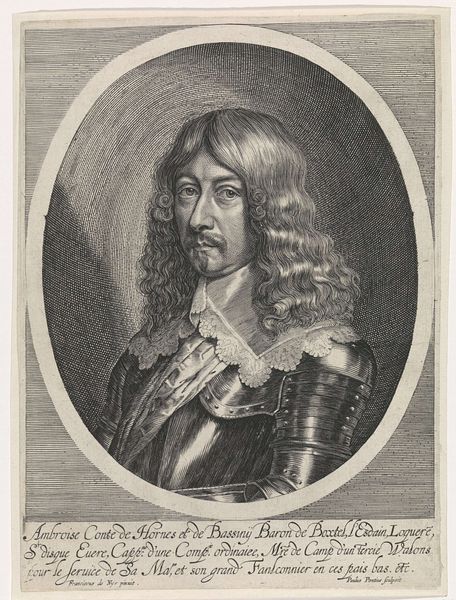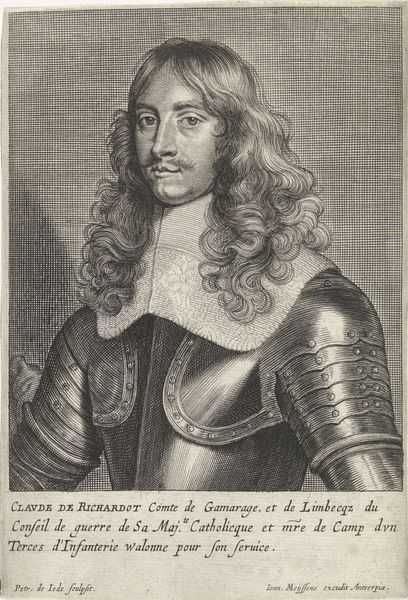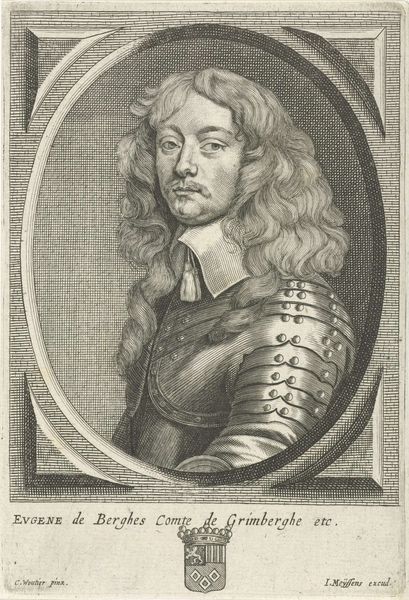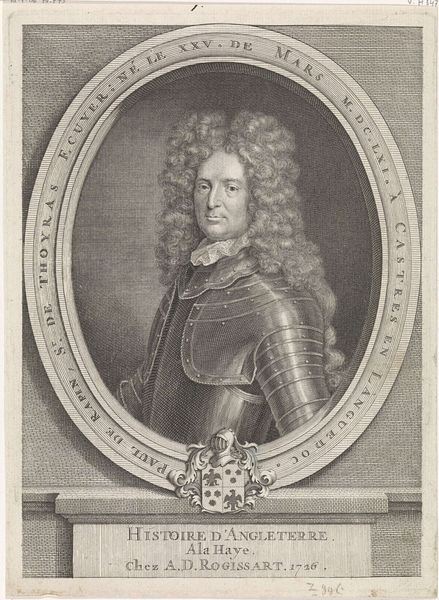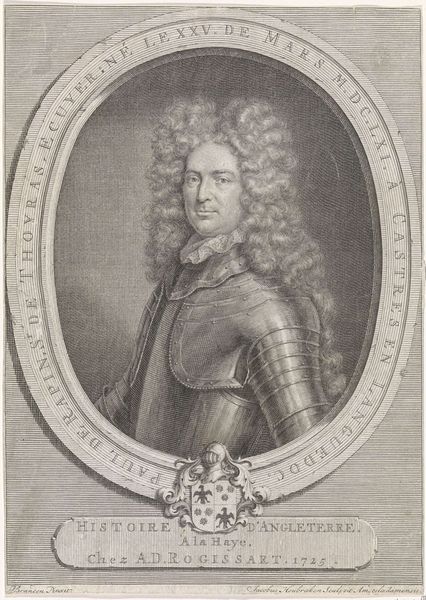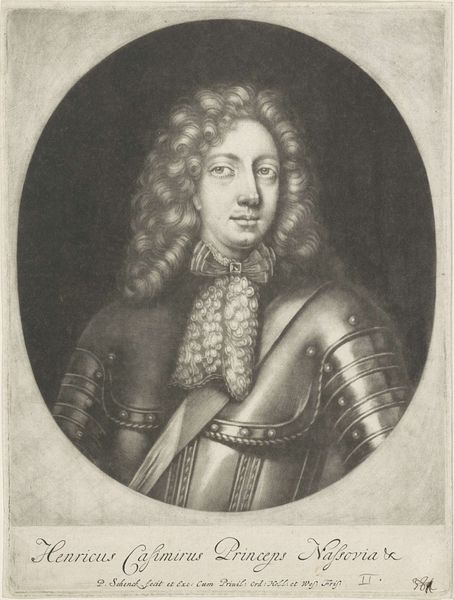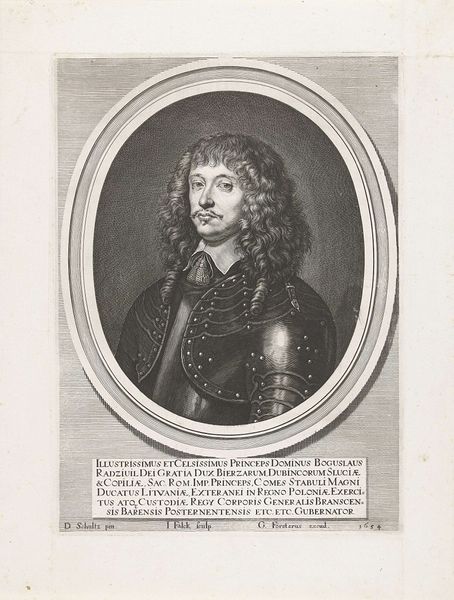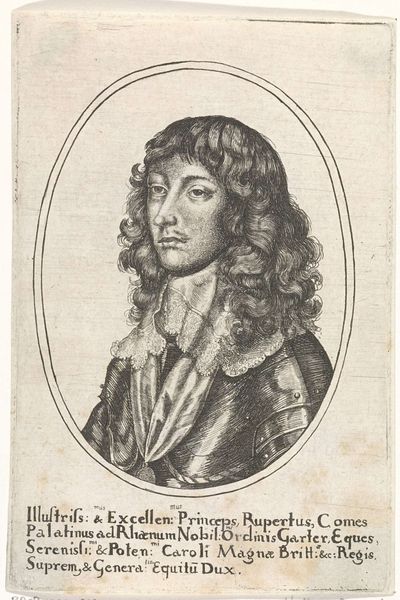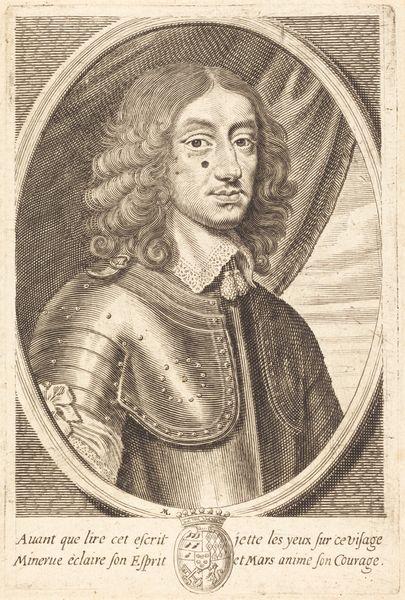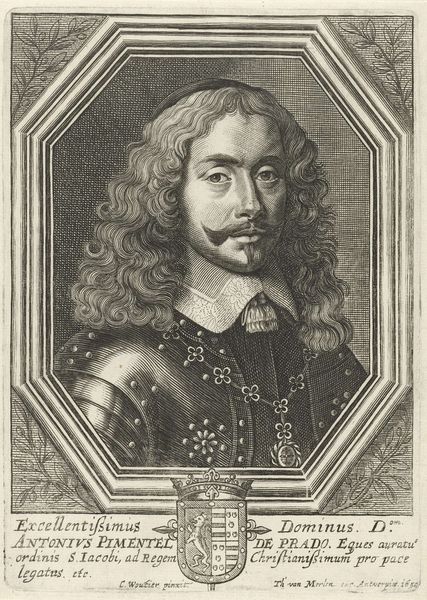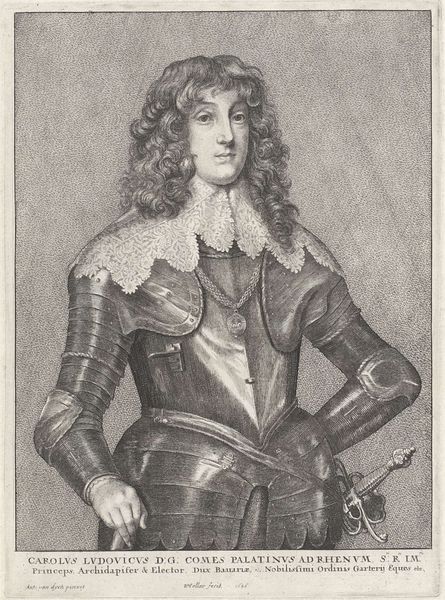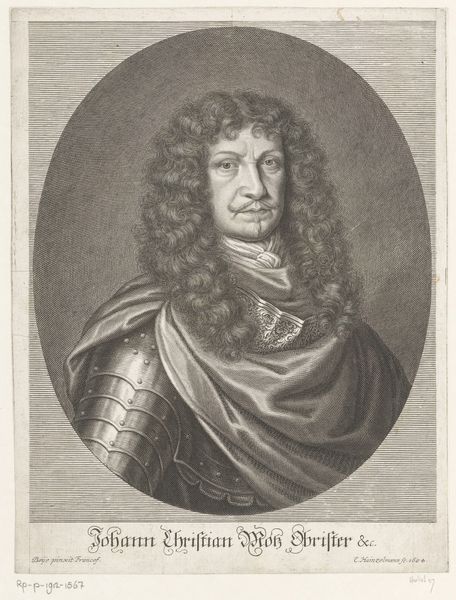
Portret van James Graham, markies van Monrose, graaf van Kingcairne 1620 - 1660
0:00
0:00
adriaenmatham
Rijksmuseum
print, metal, engraving
#
portrait
#
baroque
# print
#
metal
#
old engraving style
#
figuration
#
line
#
history-painting
#
engraving
#
realism
Dimensions: height 172 mm, width 113 mm
Copyright: Rijks Museum: Open Domain
Curator: This is a print depicting James Graham, Marquis of Montrose, Earl of Kingcairne, created between 1620 and 1660 by Adriaen Matham. Editor: It's a very formal portrait. The detail in the armour is amazing. It feels like a powerful, authoritative image, almost imposing. How do you interpret this work, considering its historical context? Curator: Well, let's consider what’s missing. Where are the overt symbols of military victory we might expect given the inscription indicating that James Graham was Lieutenant Governour and Captain General for His Majesty? Instead, the image seems preoccupied with projecting status and nobility through symbolic display. Why do you think Matham chose this approach? Editor: Perhaps Matham aimed to depict Montrose not just as a military leader, but as a nobleman rooted in the land and class structure? A man divinely appointed, rather than merely accomplished on the battlefield? Curator: Precisely! The inclusion of the heraldic symbols in the upper corners of the portrait serve as a deliberate connection to lineage and divine rights. The text accompanying his portrait underscores the various tiers and ranks that were bestowed on him. Moreover, Matham’s deliberate, almost loving rendering of his hair soften any imposing readings, suggesting that class and identity also served to humanize the sitter. How does that consideration complicate your initial reading? Editor: It shifts my perception. The portrait now seems less about individual power and more about the system that empowered him. The armor speaks of both authority and subjugation. Curator: Indeed, this portrait opens up questions about the relationship between power, identity, and representation during this period. By critically examining such portrayals, we can dissect the ways power operates through cultural production. Editor: It's fascinating to see how much a single image can reveal about the social and political landscape of its time. Curator: Exactly! These portraits aren't just records of individuals; they are records of systems.
Comments
No comments
Be the first to comment and join the conversation on the ultimate creative platform.
